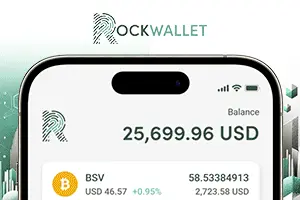|
Getting your Trinity Audio player ready...
|
A busy week for Uganda saw it launch a central bank digital currency (CBDC) pilot in an effort to build the largest on-chain economy in Africa, with $5.5 billion in real-world assets (RWAs). Meanwhile, the Common Market for Eastern and Southern Africa (COMESA), of which Uganda is a member, has progressed its digital payments system aimed at cutting transaction costs by allowing businesses to settle deals in local currencies.
Uganda’s CBDC and tokenization
Last week, blockchain infrastructure firm Global Settlement Network (GSN) announced that it had partnered with Diacente Group, developer of Uganda’s Karamoja Green Industrial and Special Economic Zone (GISEZ), to launch what it described as “the world’s most advanced tokenized economy.”
The partnership will digitize value flows across key sectors by bringing $5.5 billion worth of real-world infrastructure assets on-chain, spanning sectors such as food production, minerals, renewable energy, and global trade. The tokenization effort will span major physical infrastructure, including agro-processing hubs, mining operations, and solar plants.
The project aims to enable individuals, institutions, and governments to participate more directly in economic development by unlocking global capital, reducing reliance on intermediaries, and enabling “mobile-first users” to access and settle high-value transactions securely.
“The initiative represents a paradigm shift in how financial and industrial infrastructure is delivered in emerging markets,” said GSN in its October 8 press release. “It will enable a fully integrated digital economy that is embedded within national development priorities.”
As part of the rollout, Uganda’s first CBDC is being piloted, deployed on GSN’s permissioned blockchain, and backed by Ugandan treasury bonds.
This digital shilling will operate in a regulated environment and adhere to local and international compliance standards, including full Know Your Customer (KYC) and Anti-Money Laundering (AML) protocols. Crucially, it will also be accessible via smartphone, enabling over 40 million people to transact using digital currency for the first time.
“We’re building infrastructure that goes beyond theory; a programmable economy grounded in real assets, regulatory collaboration, and mass accessibility,” said Ryan Kirkley, co-founder of GSN. “This is how we close the gap between digital finance and real-world impact.”
According to GSN, the project will directly support Uganda’s Vision 2040, a roadmap launched last year to transform it from “a peasant to a modern and prosperous country within 30 years. It also builds on the African Union’s Agenda 2063, a “master plan” for transforming Africa into the “global powerhouse of the future.”
“This partnership goes beyond infrastructure; it’s about unlocking long-term value for our people and our region,” said Edgar Agaba, Chairman of Diacente Group. “By integrating tokenization and CBDCs into Uganda’s development roadmap, we’re creating transparent, tech-driven ecosystems that attract new capital, empower local industries, and scale sustainable growth from the ground up.”
Uganda may also benefit from another regional initiative launched this week, which aims to ease barriers to cross-border payments in Africa.COMESA looks to digital payments
Meanwhile, the largest trade bloc in Africa, COMESA, revealed that it is advancing its flagship ‘Digital Retail Payments Platform’ (DRPP), an initiative designed to ease barriers to cross-border payments and facilitate trade using local currencies.
COMESA is an intergovernmental body that aims to encourage economic cooperation between countries in East and Southern Africa. It is Africa’s largest regional economic organization, with 19 member states, including Egypt, Ethiopia, Kenya, Namibia, Rwanda, Uganda, Zambia, and Zimbabwe, representing a population of around 390 million.
In an October 9 press release, it announced a “significant development in the DRPP initiative,” namely that Malawian and Zambian payment corridors had successfully progressed from integration testing to user trials.
“For the first time, cross-border trade within COMESA can be settled directly in local currencies,” said Kenyan Trade Minister Lee Kinyanjui. “This shift reduces reliance on scarce foreign currency, shields businesses from volatility, lowers costs, and opens the door for SMEs, women, and youth to fully participate in regional trade.”
He described the scheme as “a game-changer for regional trade,” underscoring the importance of the DRPP as an instant, inclusive, and affordable cross-border payment system that keeps transaction costs below 3%.
“Allows a border trader to pay instantly, ensures transaction safety under Central Bank supervision, and provides inclusion for banks, mobile money, and fintech operators alike,” added Kinyanjui.
The project is being spearheaded by the COMESA Clearing House (CCH), the institution that facilitates settlement of cross-border trade and services among member states. CCH operates the Regional Payment and Settlement System (REPSS) and said it was piloting the DRPP to extend instant, inclusive payments to micro, small, and medium enterprises (SMEs), as well as to women, and underserved communities.
“The DRPP represents CCH’s commitment to innovation in the digital finance sector,” said the institution on Thursday. “CCH is laying the foundation for cross-border transactions that are as seamless as local payments.”
Watch: Finding ways to use CBDC outside of digital currencies

 12-15-2025
12-15-2025 





